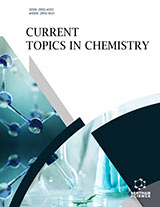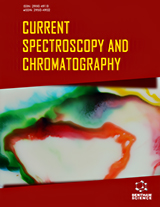Abstract
Raman Spectroscopy is on the verge of becoming a promising tool in Forensic Toxicology with the increasing number of studies in the literature. Raman Spectroscopy, which has been found successful in many areas of forensic sciences and has found its place in routine use, is gaining more importance recently in Forensic Toxicological studies especially with Surface Enhanced Raman Spectroscopy due to its fast, reliable and cost-effective results. In this paper, the forensic toxicological studies carried out by using Raman Spectroscopy are reviewed and discussed with the findings, and suggestions are made regarding the use and study of Raman Spectroscopy in the field of Forensic Toxicology for future applications.
Keywords: Forensic sciences, forensic toxicology, illicit drugs, raman spectroscopy, SERS, therapeutic drugs.
Graphical Abstract
Current Analytical Chemistry
Title:Raman Spectroscopy as a Novel Technology in Forensic Toxicological Analyses
Volume: 17 Issue: 8
Author(s): Ramazan Akçan*Mahmut Şerif Yıldırım
Affiliation:
- Department of Forensic Medicine, Faculty of Medicine, Hacettepe University, Ankara,Turkey
Keywords: Forensic sciences, forensic toxicology, illicit drugs, raman spectroscopy, SERS, therapeutic drugs.
Abstract: Raman Spectroscopy is on the verge of becoming a promising tool in Forensic Toxicology with the increasing number of studies in the literature. Raman Spectroscopy, which has been found successful in many areas of forensic sciences and has found its place in routine use, is gaining more importance recently in Forensic Toxicological studies especially with Surface Enhanced Raman Spectroscopy due to its fast, reliable and cost-effective results. In this paper, the forensic toxicological studies carried out by using Raman Spectroscopy are reviewed and discussed with the findings, and suggestions are made regarding the use and study of Raman Spectroscopy in the field of Forensic Toxicology for future applications.
Export Options
About this article
Cite this article as:
Akçan Ramazan *, Yıldırım Şerif Mahmut , Raman Spectroscopy as a Novel Technology in Forensic Toxicological Analyses, Current Analytical Chemistry 2021; 17 (8) . https://dx.doi.org/10.2174/1573411016999200602124328
| DOI https://dx.doi.org/10.2174/1573411016999200602124328 |
Print ISSN 1573-4110 |
| Publisher Name Bentham Science Publisher |
Online ISSN 1875-6727 |
 24
24
- Author Guidelines
- Bentham Author Support Services (BASS)
- Graphical Abstracts
- Fabricating and Stating False Information
- Research Misconduct
- Post Publication Discussions and Corrections
- Publishing Ethics and Rectitude
- Increase Visibility of Your Article
- Archiving Policies
- Peer Review Workflow
- Order Your Article Before Print
- Promote Your Article
- Manuscript Transfer Facility
- Editorial Policies
- Allegations from Whistleblowers
- Announcements
Related Articles
-
Vasoactive Intestinal Peptide in Neurodevelopmental Disorders:Therapeutic Potential
Current Pharmaceutical Design Peroxisome Proliferator-Activated Receptor (PPAR) in Regenerative Medicine: Molecular Mechanism for PPAR in Stem Cells’ Adipocyte Differentiation
Current Stem Cell Research & Therapy Scutellarin Attenuates Microglia-Mediated Neuroinflammation and Promotes Astrogliosis in Cerebral Ischemia - A Therapeutic Consideration
Current Medicinal Chemistry Modulation of Transmitter Release Via Presynaptic Ligand-Gated Ion Channels
Current Molecular Pharmacology TRPV1 Channel: A Potential Drug Target for Treating Epilepsy
Current Neuropharmacology Clinical Potential of Neuropeptide Y Receptor Ligands in the Treatment of Epilepsy
Current Topics in Medicinal Chemistry Potential Role of Calcium/Calmodulin-dependent Protein Kinase II to Angiogenesis Mediated Pathological Changes Seen in Osteoarthritis
Current Angiogenesis (Discontinued) Current Progress in Molecular Responses to Acidosis in the Central Nervous System
Current Medicinal Chemistry - Central Nervous System Agents WISP1 (CCN4) Autoregulates its Expression and Nuclear Trafficking of β-Catenin during Oxidant Stress with Limited Effects upon Neuronal Autophagy
Current Neurovascular Research Neutralizing Endogenous VEGF Following Traumatic Spinal Cord Injury Modulates Microvascular Plasticity but not Tissue Sparing or Functional Recovery
Current Neurovascular Research Physiological and Pathological Functions of Acid-Sensing Ion Channels in the Central Nervous System
Current Drug Targets Anesthetics Act in Quantum Channels in Brain Microtubules to Prevent Consciousness
Current Topics in Medicinal Chemistry Inflammation-Mediating Proteases: Structure, Function in (Patho) Physiology and Inhibition
Protein & Peptide Letters Factors Modulating Chondrogenesis and Mechano-Inductive Systems for Cartilage Tissue Engineering from Mesenchymal Stem Cells: A Review
Current Tissue Engineering (Discontinued) Ginger and Heart Health: From Mechanisms to Therapeutics
Current Molecular Pharmacology Pathology of Multiple Sclerosis
CNS & Neurological Disorders - Drug Targets Emerging Roles of Cysteine Cathepsins in Disease and their Potential as Drug Targets
Current Pharmaceutical Design Cardiovascular Control After Spinal Cord Injury
Current Vascular Pharmacology Voltage-Gated Calcium Channels as Targets for the Treatment of Chronic Pain
Current Drug Targets - CNS & Neurological Disorders Mesenchymal Stem Cells of Dental Origin-Their Potential for Antiinflammatory and Regenerative Actions in Brain and Gut Damage
Current Neuropharmacology



























